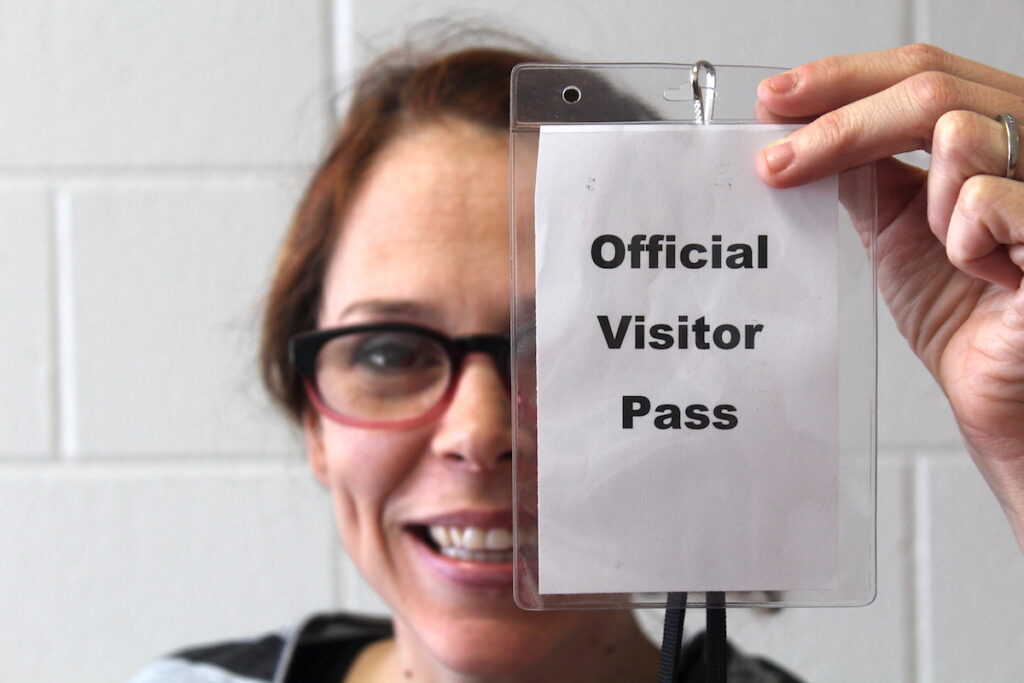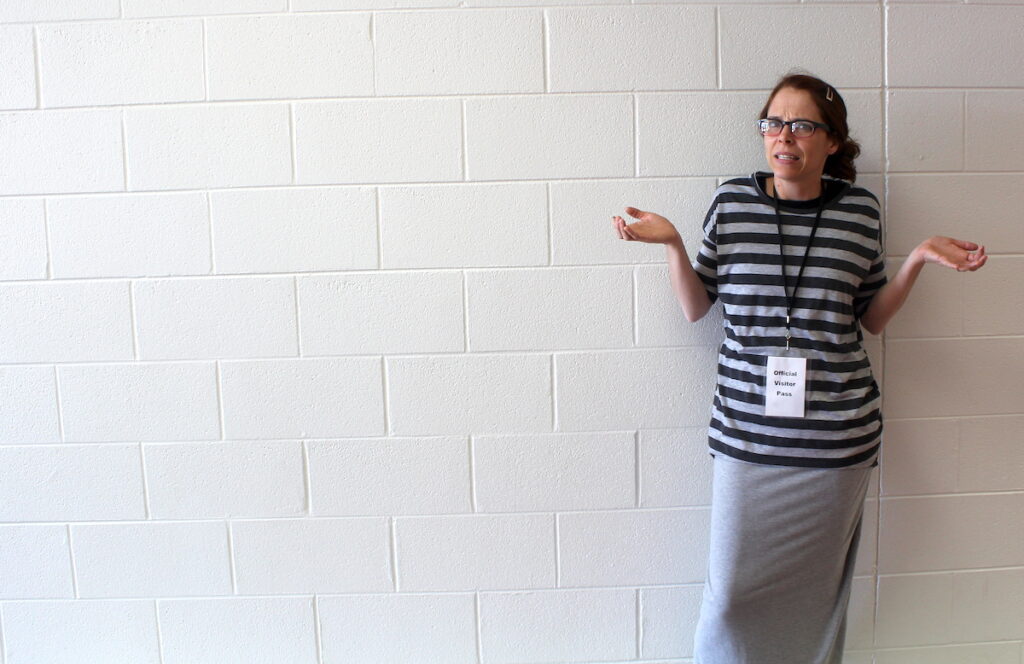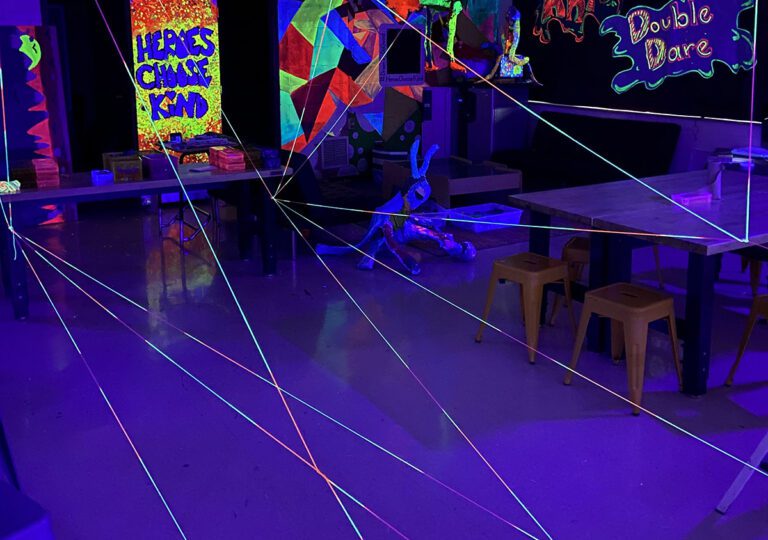Educational fads are part of teaching. New ideas are introduced, integrated, and then later abandoned in favor of other innovations. This cycle of constant improvement is what helps us hone our craft as educators. But, sometimes this influx of new ideas means we forget about some old favorites along the way.
Lately, I’ve been reflecting on memorable teachers from my own elementary school experience. Particularly, I have been thinking about the creative strategies those teachers used to engage me. I’ve found myself asking, “What did they try that I might be able to use in my own classroom?”
This is what led me to try the wackiest review method ever, a visit from a “Teacher Twin.”

This strange (but highly effective) strategy is sure to get your kids talking! It is one part improvisational drama and two parts content review. Classroom hilarity will ensue, but it is guaranteed to quickly move your students from a basic level of understanding to mastery.
Flashback: What I Remember From Elementary School
One day in late spring, my fourth grade teacher, Barb Thomas,* randomly announced that her twin sister from out of state was going to be visiting the classroom. This nugget of info about Mrs. Thomas’s personal life had the whole class a twitter. A twin? How fascinating! It had never even occurred to us that Mrs. Thomas might have a family; I mean, she sleeps at school, right?!
Fast forward to the afternoon, when we needed to review for the next days’ dreaded math exam. It was almost summer break, who had time to study for this math thing? Mrs. Thomas shared that her sister was late, and she needed to step out for a second. Dear old sis was probably just lost in the hallway.
A minute later, the twin sister walked through the door. She certainly looked like Mrs. Thomas. But, this woman had a vague and unplaceable accent, and she was wearing a different dress. It couldn’t be her, right? The sister told us that Mrs. Thomas had been unexpectedly called to the principal’s office. Thus, the twin would have to run the math review.
Gasp, The Twin Doesn’t Know the Content!
The first math problem went up on the board, and it was immediately apparent to the whole classroom that Mrs. Thomas’s sister didn’t share her gift for numbers. She was appallingly bad at math. After she apologized profusely in her accent, we had no choice but to step in and explain things to her. This progressed for most of the afternoon; us explaining to Mrs. Thomas’s misguided sister how to do the problems in the math review.
Eventually, the twin grew concerned about the whereabouts of the actual Mrs. Thomas and left to find her. The real Mrs. Thomas came back in tried to start the math review, but somehow we had all already become experts over the course of the afternoon.
Why It Worked
As an adult, I am a little impressed with Mrs. Thomas’s savvy strategy. After all, everybody knows if you want to master something, it helps to teach it. And, nothing motivates a group of fourth graders quite like taking over and explaining the world to an adult who seems pretty dense. Mrs. Thomas might be an instructional genius!
But, this was the late 80s, and kids are definitely different now. Would this same review game work in today’s art classrooms? I decided to give it a try.
The Day MY “Sister” Came to Art

It was the last month of school, and my first graders were working on painted paper collages. I had demonstrated some strategies for improving collage craftsmanship, but due to the schedule, I hadn’t seen this particular group for over a week. I was sure they would need a brief technique review. The weather had finally turned beautiful, so I also knew my first-grade artists would need help focusing. I decided to try Mrs. Thomas’s wacky strategy.
What I Learned
What resulted was probably one of the most memorable forty-minute class periods of my teaching career. The things my students said and did were hilarious, but the best part was that the review was totally student-directed. Students were sharing concepts with one another, correcting misconceptions, and coming to a group consensus about the main ideas of their learning. It was chaotic, but it was an exciting and deeply meaningful review.
Here are a few helpful hints I learned along the way.
1. Carefully think through your costume change!
In today’s world, you simply cannot leave students unattended in a classroom. A professionally responsible amount of time to be in the hallway shouldn’t exceed forty-five seconds, and I planned my outfit switch accordingly. I wore leggings and a top to school, and my alter ego put a baggy skirt and tunic on over the existing clothes. I added a pair of glasses and a fake visitor badge to complete the ensemble. The key is to make an instant change, so your students are still supervised.

(Pro tip: Make a fake visitor badge on the computer. When a few skeptics were questioning my identity, I referred to the visitor badge. “If I was really your teacher, would I have THIS?” Crickets. They couldn’t argue with that, at least momentarily!)
2. Allot extra time for this activity!
When I re-entered the room, the kids went nuts. I immediately began to question how academically beneficial this was going to be, as I was barraged by dozens of questions from skeptical six-year-olds. “Mrs. Moss, is that you?” “Wait, what is your REAL name?” “Do you even know how to draw?”
Initially, it took them a full five minutes to settle down and focus on the task at hand; showing me (a non-artist who kept pronouncing it “college” not “collage”) the strategies to produce a painted paper collage with quality craftsmanship. The conversation got richer as the class progressed, and I was pleasantly surprised to see some of my quieter students stepping up to share their process knowledge with a befuddled adult.
3. Kids aren’t as naïve these days!
As a fourth grader, I had a feeling that Mrs. Thomas and her twin sister were the same person, but I couldn’t be totally sure. The change of clothes, the accent; she really sold it. But then again, in the late eighties, I also believed that if you simultaneously ate Pop Rocks and drank a Coke, your body would explode from the inside. It was a more naïve time.
My first graders weren’t fooled. They were analyzing every tiny detail of my appearance from whether I was wearing the same shoes to whether the glasses seemed prescription or not. But, they were also listening to every single word I said, with undivided attention. The level of student engagement was incredible to watch.
4. Pick a review topic with mastery in mind.
While Mrs. Thomas was using this strategy to review specific math concepts, the application within an art classroom seems to naturally lend itself to procedural knowledge. Students must already know a technique or process well enough to explain it to someone else. In my case, the students were reviewing strategies they had learned a week earlier but hadn’t had much chance to rehearse. The result was a surprising level of mastery. When my alter ego left the classroom, and I returned to facilitate the studio time, I was shocked at how few questions students had. They had been deeply focused on the content their peers were sharing with a very confused adult and had scaffolded off one another’s knowledge.
Ultimately, I didn’t convince my first graders I was another person. They have an impressive attention to detail and halfway through the conversation, a little boy pointed out that my “sister” had an identical cut on her foot. The ruse was up!
However, they LOVED the activity. The novelty and humor of the situation, combined with an opportunity for them to reverse the teaching and learning role with an adult led to high engagement for everyone. Even better, I observed such confidence in their artistic process during studio time. They knew exactly what to do because they had taught it!
How do you review techniques and procedures with your students to move toward mastery?
What teaching strategies do you remember from your childhood you would like to try in your classroom?
*Sadly, I am no longer in contact with this fabulous and memorable teacher who made me love fourth grade. In lieu of asking her professional permission to use her name for this article, an alias has been used.
Magazine articles and podcasts are opinions of professional education contributors and do not necessarily represent the position of the Art of Education University (AOEU) or its academic offerings. Contributors use terms in the way they are most often talked about in the scope of their educational experiences.





